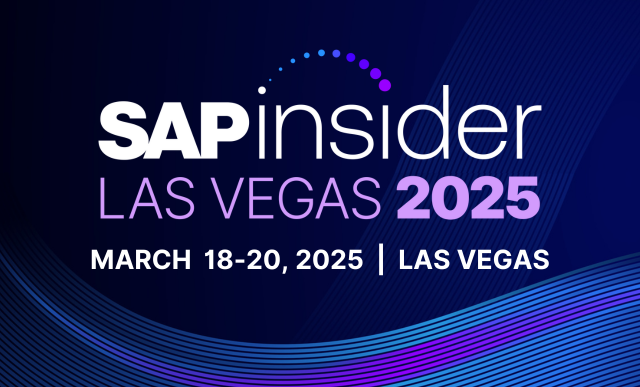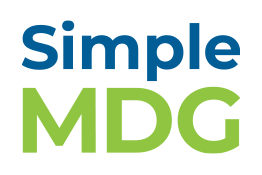SAP Data Governance
Filter By
Browse By
- SAP Analytics and AI
- SAP Application Development and Integration
- All SAP Application Development and Integration
- SAP ABAP
- SAP ABAP Development Tools
- SAP ABAP Test Cockpit
- SAP API Management
- SAP BAPI
- SAP Basis
- SAP BRF
- SAP Business Application Studio
- SAP CMS
- SAP Design Studio
- SAP Development Tools
- SAP DevOps
- SAP EAI
- SAP EDI
- SAP Extension Suite
- SAP Fiori
- SAP Fiori Elements
- SAP Integration Suite
- SAP Low Code Application Development
- SAP Low Code Automation
- SAP Netweaver
- SAP Release Management
- SAP UI5
- SAP Web Application Server
- SAP Web IDE
- SAP Business Process Management
- SAP Center of Excellence
- SAP CIO
- SAP Customer Experience
- SAP Data and Data Management
- All SAP Data and Data Management
- SAP BW
- SAP BW/4HANA
- SAP Crystal Reporting
- SAP Data Archiving
- SAP Data Center
- SAP Data Governance
- SAP Data Integration
- SAP Data Migration
- SAP Data Quality
- SAP Data Services
- SAP Data Strategy
- SAP Data Visualization
- SAP Data Warehouse Cloud
- SAP DMS
- SAP Document Control
- SAP EIM
- SAP ETL
- SAP ETL Tools
- SAP HANA
- SAP HANA Administration
- SAP HANA Deployment Infrastructure
- SAP HANA Studio
- SAP Master Data
- SAP Master Data Governance
- SAP MDM
- SAP Enterprise Architect
- SAP Enterprise Asset Management
- SAP ERP
- SAP Finance
- All SAP Finance
- SAP Accounting
- SAP AR AP
- SAP Asset Accounting
- SAP Billing Systems
- SAP BPC
- SAP BRIM
- SAP Cash Management
- SAP Central Finance
- SAP Controlling
- SAP COPA
- SAP Cost Center Accounting
- SAP e-invoicing
- SAP FICO
- SAP Finance Automation
- SAP Financial Closing Cockpit
- SAP Financial Consolidation
- SAP Financial Planning
- SAP FX Risk
- SAP General Ledger
- SAP Global Tax Management
- SAP Hyperion
- SAP Order to Cash
- SAP Payment Processing
- SAP Profitability Analysis
- SAP Rebate Management
- SAP S/4HANA Finance
- SAP Universal Journal
- SAP Governance Risk and Compliance
- SAP Human Capital Management
- SAP Intelligent Technologies
- SAP Platform and Technology
- All SAP Platform and Technology
- SAP Business Technology Platform
- SAP Cloud Connector
- SAP Cloud Integration Platform
- SAP Cloud Migration
- SAP Cloud Platform
- SAP Cloud Providers
- SAP Cloud Strategy
- SAP Container Platform
- SAP Digital Asset Management
- SAP Digital Integration Hub
- SAP Digital Signature
- SAP HANA Enterprise Cloud
- SAP HEC
- SAP Hyperscalers
- SAP Infrastructure
- SAP Messaging
- SAP Smart Forms
- SAP Quality and Testing
- SAP Security
- SAP Spend Management
- SAP Supply Chain Management
- All SAP Supply Chain Management
- SAP APO
- SAP Asset Management
- SAP Business Network
- SAP Digital Manufacturing Cloud
- SAP Digital Twin
- SAP EWM
- SAP IBP
- SAP Inventory Management
- SAP Label Printing
- SAP Logistics
- SAP Manufacturing
- SAP Manufacturing Automation
- SAP MES
- SAP MII
- SAP MM
- SAP MRO
- SAP MRP
- SAP Order Management
- SAP Plant Maintenance
- SAP PLM
- SAP Production Planning
- SAP S&OP
- SAP SD
- SAP SPM
- SAP Supply Chain Planning
- SAP Track and Trace
- SAP Transportation Management
- SAP System Administration
Data Governance: An Overview and Key Considerations
What Is Data Governance?
SAP data can deliver innovation, drive user experience, and provide competitive advantage. The process of marrying SAP data with non-SAP data from different systems — from Internet of Things devices to the back office to an organization’s web systems — is defining data culture around the world.
Simply combining data, however, is not enough. Proper management is essential to realizing its value.
Data governance is considered a core component of an effective data management strategy. Data governance can ensure that data is consistent, accurate, and protected.
The Data Governance Institute (DGI) defines data governance as “a system of decision rights and accountabilities for information-related processes, executed according to agreed-upon models which describe who can take what actions with what information, and when, under what circumstances, using what methods.” (Read the DGI’s 10 rules of engagement.)
Data Governance: An Overview and Key Considerations
What Is Data Governance?
SAP data can deliver innovation, drive user experience, and provide competitive advantage. The process of marrying SAP data with non-SAP data from different systems — from Internet of Things devices to the back office to an organization’s web systems — is defining data culture around the world.
Simply combining data, however, is not enough. Proper management is essential to realizing its value.
Data governance is considered a core component of an effective data management strategy. Data governance can ensure that data is consistent, accurate, and protected.
The Data Governance Institute (DGI) defines data governance as “a system of decision rights and accountabilities for information-related processes, executed according to agreed-upon models which describe who can take what actions with what information, and when, under what circumstances, using what methods.” (Read the DGI’s 10 rules of engagement.)
Key Considerations for SAPinsiders
The following steps can help you implement effective data governance:
- Create a strong business case for data governance. According to SAP partner Winshuttle, you need to be able to clearly communicate the value of your data to gain support from leadership. Winshuttle’s Winshuttle Foundation and Winshuttle Studio offer data management capabilities. According to the vendor, your data should be maintained through a data governance program that can ensure data quality and proper management, while complying with regulations to keep the data safe and effective.
- Increase revenue potential with a strong data governance foundation. Consider the approach of Breakthru Beverage Group. On a mission to become a fully integrated, data-driven business, the company first built a foundation with its data governance program. The initiative to cleanse and conform its material, vendor, and customer data was supported by SAP partner Protiviti, and resulted in a scorecard on data cleanliness as well as a downstream benefit: revenue generation, by enabling the business to more quickly activate products and more accurately report on them. Read the full data story.
- Set the stage for standardization and automation capabilities. In 2016, we wrote about Keurig Green Mountain’s approach to data governance. In response to meteoric growth and a growing love of the single-cup brew, the company undertook an ambitious data governance project. It transitioned from a data maintenance to a data governance organization. At the time, Keurig’s Director of Master Data Management Business Process Eileen Hanafin said its data governance initiative set the company up for future standardization and automation capabilities with a focus on continuous improvement.
895 results
-

 Premium
Premium
5 Tips for a Successful Global Data Warehouse Project
Reading time: 26 mins
Establishing a global enterprise data warehouse (EDW) can involve many unique challenges. Recognizing and negotiating these challenges can yield a global EDW with benefits to the entire organization. Key Concept To standardize data gathering and make data more visible across the organization, companies often create an enterprise data warehouse (EDW) to perform global reporting. This...…
-

Breakthru Beverage Group Reaches New Horizon on Journey to Become a Fully Integrated, Data-Driven Business
Reading time: 15 mins
Modern consumers expect their unique needs to be met at the push of a button, and this expectation includes the food and beverage industry, as evidenced by the rapid increase in grocery pickup and delivery services, for example. Breakthru Beverage Group — which offers restaurants and retailers a portfolio of established and emerging beer, wine,…
-

Comprehensive Identity and Access Management in the Cloud
Reading time: 8 mins
Digital technologies are transforming enterprise system landscapes, bringing with them a range of security issues businesses must address — particularly when it comes to managing user identities and access to business solutions. To address these challenges, businesses require a comprehensive, unified, centralized approach to identity management and access governance. This article introduces SAP Cloud Identity…
-
-

 Premium
Premium
Part 1: Data Modeling Strategies to Avoid Data Inaccuracy and Ensure Consistency
Reading time: 54 mins
Minimize and eliminate data inconsistency and inaccuracy in SAP NetWeaver BI environments by adopting and adapting the data modeling techniques described here. The author explains the accuracy, benefits, and drawbacks of each. Key Concept Common data modeling approaches produce inconsistent and inaccurate data over time. This results from insufficient understanding of delta processes and different...…
-

Why Enterprises are Upgrading to Databricks from Snowflake
Reading time: 6 mins
Databricks and Snowflake are distinct cloud-based solutions catering to different data-driven needs.
-

Fortifying the Digital Core with a Data-Centric Security Framework
Reading time: 6 mins
Organizations are harnessing technology like AI and cloud computing to create a ‘digital core’ for real-time insights and operational agility, but must simultaneously implement Zero Trust Data-Centric Security to protect sensitive data and enhance competitiveness.
-

- SAP BOBJ
 Premium
Premium
Two Ways to Connect to Data Sources Using SAP BusinessObjects Cloud
Reading time: 8 mins
SAP BusinessObjects Cloud offers data connectivity to many on-premise and cloud data sources. You can either acquire data into SAP BusinessObjects Cloud or connect to the data source in real time without any replication. Learn how you can use each of the data sources available in SAP BusinessObjects Cloud, then review the use cases and...…
-
-

 Premium
Premium
Rolling Off Data from Data Targets: Which Process Is Right for You?
Reading time: 10 mins
Evaluate several processes that allow you to delete data in BW, including archiving, selective deletion, delete and change log requests, and deletion of Persistent Staging Area data and master data. Key Concept Rolling off data from a data target means deleting data from a data target in a rolling manner. Instead of simply deleting all...…
-

- SAP Supply Chain Planning
 Premium
Premium
Foodstuffs Turns the Art of Grocery into a Science
Reading time: 15 mins
Find out how Foodstuffs North Island is turning the art of grocery retailing into a science in a post-merger landscape with an SAP reimplementation and working with BackOffice Associates on a national data alignment project. See how the business is bringing science to how it manages its stock for its retail, wholesale, and liquor brands.…
-

Leveraging SAP BusinessObjects Lumira with SAP BusinessObjects BI 4.2
Reading time: 29 mins
If you missed the chat or need a refresher, we welcome you to view the online chat replay or read the full, edited transcript below. This Q&A was part of the four-part Q&A series Innovating the Core: SAP BusinessObjects Enterprise BI. Live Blog Q&A on Leveraging SAP BusinessObjects Lumira with SAP BusinessObjects BI 4.2 ...…
Featured Insiders
-

Biswaranjan Senapati
Capitol Technology University
-

Joerg Boeke
SAP BW / HANA Solution Architect, Manging PArtner BIAnalyst Gmbh & Co. KG
-

Steve Biskie
Principal, RSM US LLP
Become a Member
Unlimited access to thousands of resources for SAP-specific expertise that can only be found here.
Become a Partner
Access exclusive SAP insights, expert marketing strategies, and high-value services including research reports, webinars, and buyers' guides, all designed to boost your campaign ROI by up to 50% within the SAP ecosystem.
Upcoming Events
Related Vendors
Your request has been successfully sent


